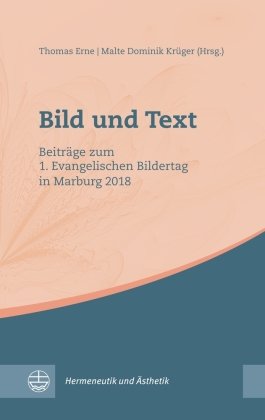Bild und Text - Beiträge zum 1. Evangelischen Bildertag in Marburg 2018
| Verlag | Evangelische Verlagsanstalt |
| Auflage | 2020 |
| Seiten | 472 |
| Format | 12,1 x 3,4 x 19,2 cm |
| Großformatiges Paperback. Klappenbroschur | |
| Gewicht | 437 g |
| Reihe | Hermeneutik und Ästhetik (HuÄ) 2 |
| ISBN-10 | 3374064671 |
| ISBN-13 | 9783374064670 |
| Bestell-Nr | 37406467A |
Die Heilige Schrift, nicht das Bild, galt bisher als das protestantische Hauptwort. Das Interesse am Bild wächst jedoch - im Einklang mit lebensweltlichen Entwicklungen (»Bilderflut«) und kulturwissenschaftlichen Einsichten (»iconic turn«) - auch in der Kirche, die sich durch ein intimes Verhältnis zur Schrift einen Namen gemacht hat. Wie verhält sich dieses Interesse des Protestantismus am Bild zur traditionellen Wertschätzung des Textes? In welchem Verhältnis stehen grundsätzlich äußere und innere Bilder, sprachliche und künstlerische Bilder zueinander? Und: Was bedeutet die (Wieder-)Entdeckung des Bildvermögens und der Einbildungskraft für die evangelische Religion, ihr »Schriftprinzip« und ihre Glaubenspraxis? Diesen Fragen gehen die Beiträge zum 1. Evangelischen Bildertag in Marburg 2018 nach.Mit Beiträgen von Hans-Martin Barth, Sigurd Bergmann, Reinhardt Brand, Thomas Erne, Ferdinand Fellmann, Markus Firchow, Jan Hermelink, Klaas Huizing, Joachim Knape, Malte Dominik Krüger, Joachim Kunstmann, Anna Niemeck, George Pattison, David Plüss, Anne Steinmeier, Alice Thaler-Battistini und Dirk Westerkamp.[Image and Text. Conference Proceedings of the »1. Evangelischer Bildertag« in Marburg, 2018]The Holy Scripture, not the image, has thus far been considered the benchmark of Protestantism. However - in accord with lifeworldly developments (»image flood«) and insights of the cultural sciences (»iconic turn«) - interest in the image is increasing, not least in the church, which has built a reputation for its intimate relation to Scripture. How does Protestantism's interest in the image relate to its traditionally high esteem of the text? What is the fundamental relationship of internal and external, linguistic and artistic images? And: What is the meaning of the rediscovery of the »capacity for the image« and the faculty of imagination for Protestant religion, its scriptural principle, and its practice of faith? The proceedings of the »1. Evangelischer Bildert ag« (1st Protestant Day of the Image) pursue these questions.

